

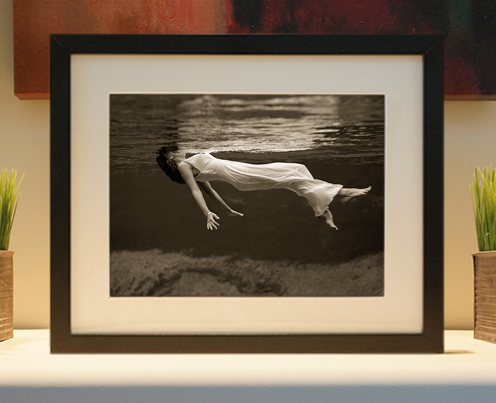
Framed or unframed, desk size to sofa size, printed by us in Arizona and Alabama since 2007. Explore now.
Shorpy is funded by you. Patreon contributors get an ad-free experience.
Learn more.

- Baldwin 62303
- Baldwin VO-1000
- Cold
- No expense spared
- Tough Guys
- Lost in Toyland
- And without gloves
- If I were a blindfolded time traveler
- Smoke Consumer Also Cooks
- Oh that stove!
- Possibly still there?
- What?!?
- $100 Reward
- Freeze Frame
- Texas Flyer wanted
- Just a Year Too Soon
- WWII -- Replacing men with women at the railroad crossing.
- Yes, Icing
- You kids drive me nuts!
- NOT An Easy Job
- I wonder
- Just add window boxes
- Icing Platform?
- Indiana Harbor Belt abides
- Freezing haze
- Corrections (for those who care)
- C&NW at Nelson
- Fallen Flags
- A dangerous job made worse
- Water Stop
Print Emporium
New York Life: 1900
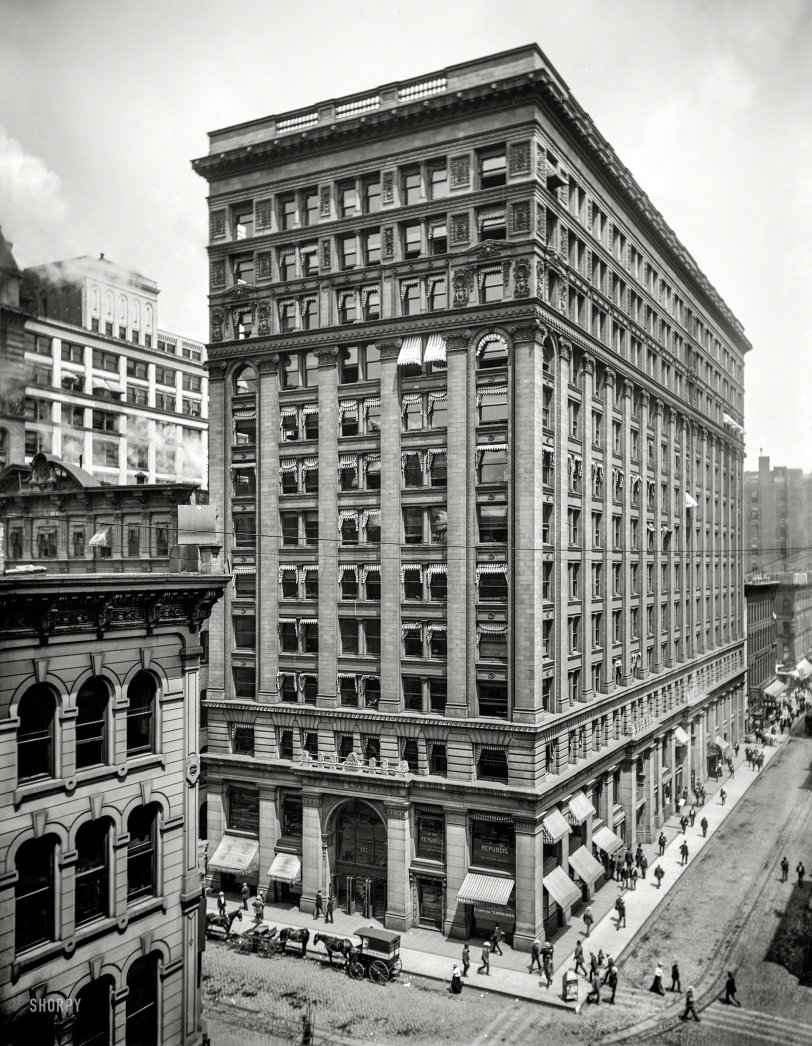
September 11, 1900. "New York Life building, Chicago." The building, at LaSalle and Monroe streets, was completed in 1894, with major additions in 1898 and 1903. 8x10 inch glass negative, Detroit Publishing Company. View full size.
"Cornice Danger" prompted removals
Numerous buildings lost pieces or whole sections of their uppermost cornices as age and freeze-thaw took their toll on the materials through the 1920s and 30s.
In 1938 the City gave itself the authority to require owners to remove cornices deemed dangerous. This threat was enough that by the 1950s wholesale decapitation of these elements was underway.
However, given the successful restorations of several cornices in recent years (like the Marquette building just around the corner on Dearborn) it is surprising that the just performed hotel conversion did not add this historic element back. Probably it was just deemed too expensive, or, if historic tax credits were involved, there wasn't clear enough documentation of the original to cornice to do it to preservation standards.
Cornice-ectomy
It would be a nice, classy gesture if they replaced the original, prominent cornice. I am not, however, holding my breath.
[One way they're dealing with cornices in Detroit. -tterrace]
Headless horse?
There appears to be a headless horse in front of the building.
I hope this is not really the case.
Lost Craftsmanship
I'm amazed daily by the amount of masonry craftsmanship used on the upper floors of early buildings like this. Decoration and ornamentation in places or so high they'll never be fully appreciated by those at ground level.
Look Out for the Curve
That continuous line of hatch covers between the inner rail and the slot as the streetcar track goes around the corner means that this was a "pull curve", the cable car had to hold on to the rope all the way around, and would do so until 1906.
Lasalle and Monroe: 2017
Like many other Loop properties, this has been converted to a boutique hotel. The Kimpton Grey Hotel opened in 2016.





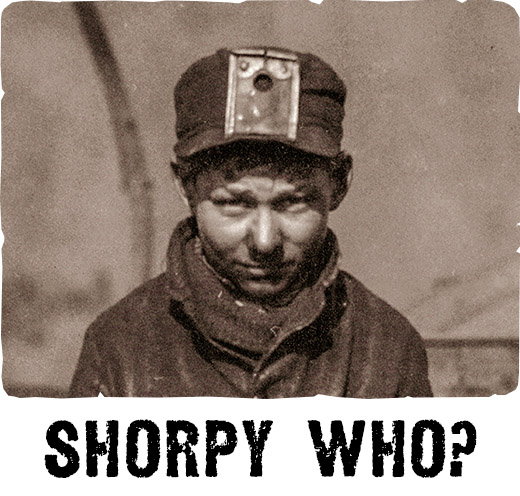
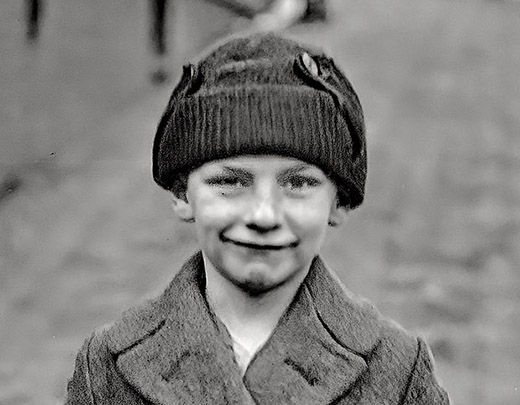
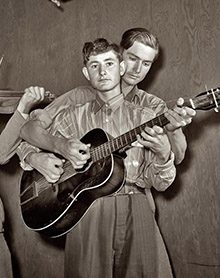
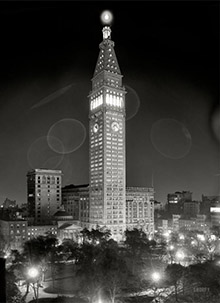
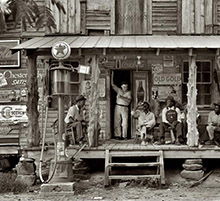
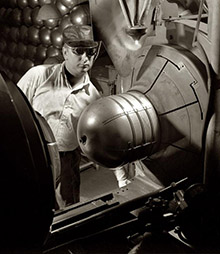
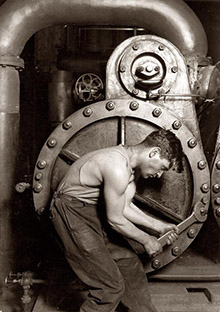
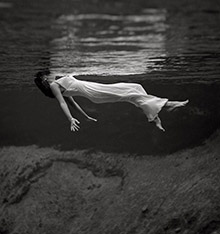
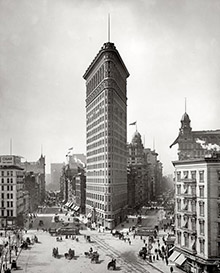
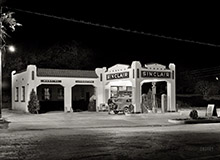
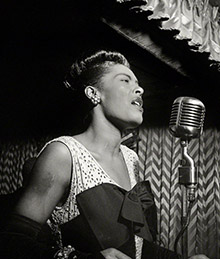
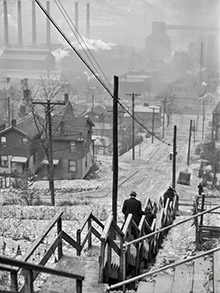
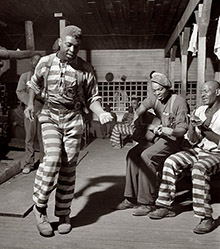
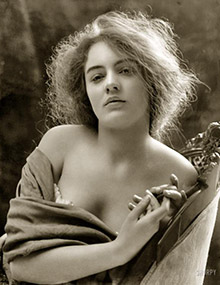
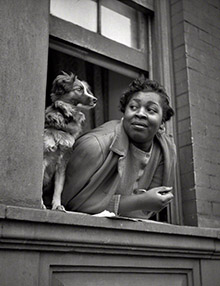
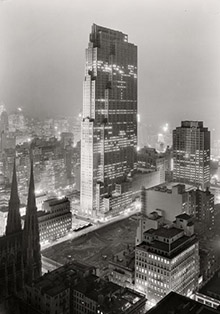
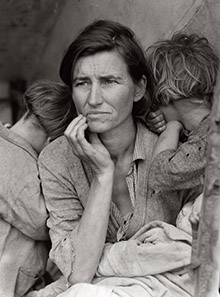
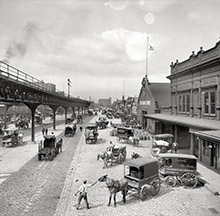
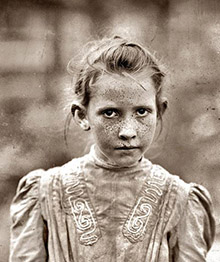
On Shorpy:
Today’s Top 5